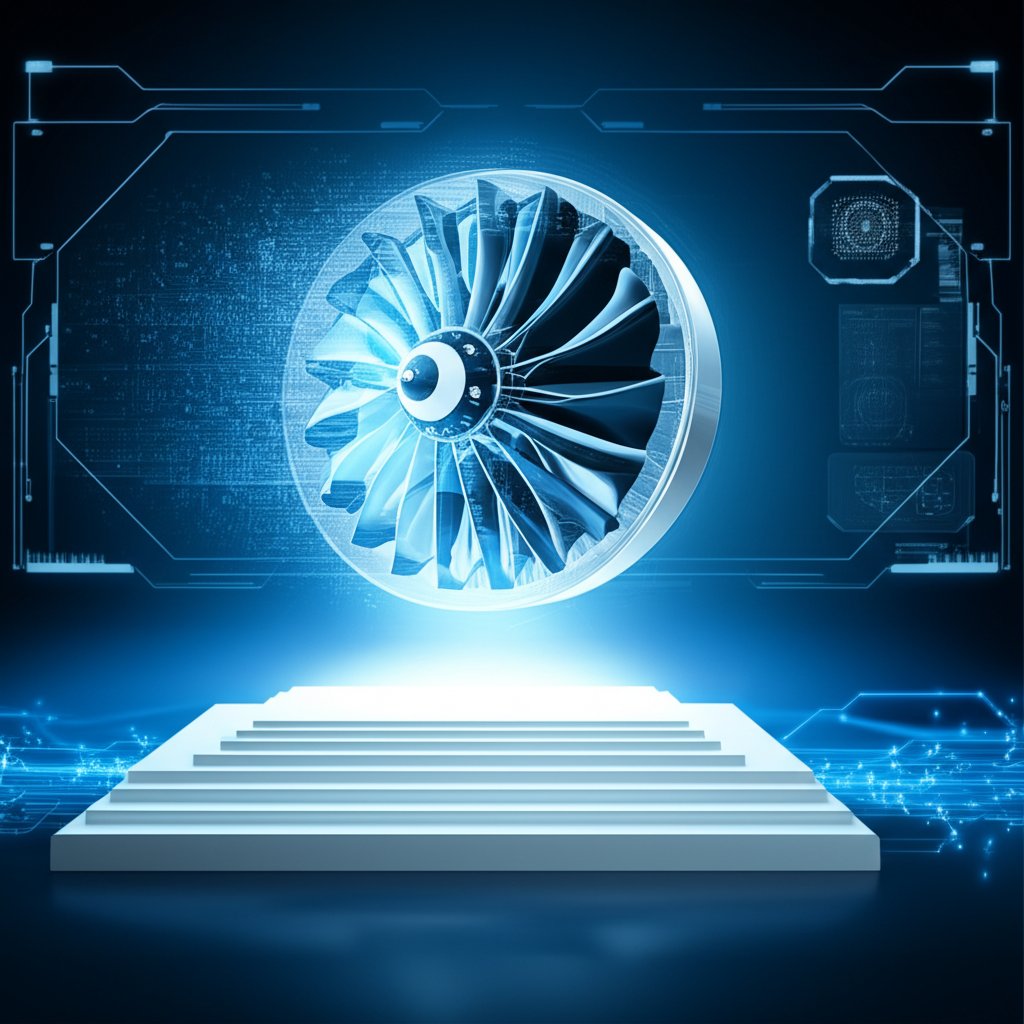Unlock Agility With On-Demand Manufacturing Solutions

TL;DR
On-demand manufacturing solutions represent a production model where goods are created only after a customer places an order, leveraging technologies like 3D printing and CNC machining. This transformative approach, often managed through integrated digital platforms, minimizes inventory costs and waste. It also enables greater product customization and significantly accelerates time-to-market, offering a flexible and efficient alternative to traditional mass production.
What Is On-Demand Manufacturing and How Does It Work?
On-demand manufacturing, also known as custom or cloud manufacturing, is a production system where items are produced only when needed and in the exact quantities required. This model fundamentally contrasts with traditional manufacturing, which relies on forecasting demand, producing goods in large batches, and storing them as inventory until sold. By aligning production directly with actual customer orders, on-demand manufacturing eliminates the financial risks associated with unsold stock and warehousing. This approach has become increasingly viable due to advancements in digital technology and logistics infrastructure that facilitate a seamless flow from order to delivery.
The operational workflow begins when a customer uploads a digital design file, typically a CAD model, to an online platform. According to an article by Xometry, these advanced platforms can provide auto-generated design-for-manufacturability (DFM) feedback and instant, accurate quotes. Once the customer confirms the order, the system generates a detailed production plan, including material requirements and scheduling, and routes it to the appropriate manufacturing facility. This high degree of automation replaces static production lines with a dynamic, order-driven process configured to respond to each unique request as it arrives.
A compelling real-world example is Topology Eyewear, which uses a customer's 3D face scan to design and produce custom-tailored glasses. As detailed in a NetSuite resource, this process involves milling acetate frames with CNC machines or laser-cutting stainless steel, a stark departure from producing thousands of identical frames. This shift requires manufacturers to prioritize operational flexibility and rapid response, but the benefits in cost, waste reduction, and customization are substantial.
To better understand the distinction, consider the core differences between the two models:
| Factor | On-Demand Manufacturing | Traditional Manufacturing |
|---|---|---|
| Production Trigger | Actual customer order | Demand forecast |
| Inventory | Minimal to none | Large stockpiles |
| Flexibility | High; easily accommodates customization | Low; optimized for standardized, high-volume runs |
| Waste | Significantly reduced (less scrap and no dead stock) | Higher risk of overproduction and material waste |
| Time-to-Market | Faster for new products and prototypes | Slower due to tooling and large batch planning |
| Upfront Cost | Lower; no need for massive inventory investment | High; significant investment in tooling and materials |
Key Technologies Driving On-Demand Manufacturing
The agility and precision of on-demand manufacturing are made possible by a suite of advanced digital fabrication technologies. These tools transform digital designs into physical parts with speed and accuracy, allowing for the production of everything from one-off prototypes to small-batch production runs. Understanding these core technologies helps clarify how customized, complex parts can be produced so efficiently.
Additive Manufacturing (3D Printing): Perhaps the most well-known enabler, additive manufacturing builds objects layer by layer from materials like plastic, metal, or ceramics. This process is ideal for creating complex geometries and intricate patterns that would be difficult or impossible to produce with traditional methods. It excels in rapid prototyping, allowing designers to quickly test and iterate on new ideas without the high cost of custom tooling.
Computer Numerical Control (CNC) Machining: This technology is a subtractive process where software controls the movement of tools to shape materials like metal and plastic into precise components. CNC machining is valued for its high accuracy, repeatability, and ability to work with a wide range of industrial-grade materials. It is perfect for producing high-strength, functional parts that require tight tolerances, moving beyond prototyping into end-use production.
Laser Cutting and Sheet Metal Fabrication: These technologies use high-powered lasers or machinery to cut, bend, and assemble sheet metal into desired shapes. Laser cutting offers exceptional precision for intricate designs, while other fabrication processes create durable enclosures, brackets, and panels. These methods are essential for producing custom metal parts quickly and cost-effectively.
Choosing the right technology depends entirely on the project's specific requirements. Here’s a simple guide:
- For complex plastic prototypes or custom jigs and fixtures, 3D printing is often the best choice due to its design freedom and speed.
- For high-strength, precision metal parts with tight tolerances, CNC machining is the industry standard.
- For custom enclosures, panels, or brackets made from flat metal stock, sheet metal fabrication and laser cutting are ideal.

Core Advantages and Strategic Benefits
Adopting on-demand manufacturing solutions offers significant strategic advantages that extend beyond the production floor, impacting a company's financial health, competitive positioning, and innovation capacity. By shifting from a forecast-driven to a demand-driven model, businesses can become more agile, responsive, and sustainable.
Reduced Costs and Waste
The most immediate benefit is the drastic reduction in inventory and storage costs. Since products are made to order, there is no capital tied up in unsold goods and no need for large warehouses. This model virtually eliminates the risk of dead stock caused by inaccurate forecasting or shifting market trends. Furthermore, as noted by MakerVerse, this process inherently reduces waste, aligning with growing consumer demand for environmental responsibility. A PwC survey mentioned by NetSuite found customers are willing to pay nearly 10% more for sustainably produced goods, making waste reduction a competitive advantage.
Increased Speed and Flexibility
On-demand manufacturing dramatically shortens product development cycles. Companies can move from digital design to physical prototype in days, not months, allowing for rapid iteration and testing. This agility enables businesses to respond quickly to market changes and customer feedback. For startups and small businesses, this lowers the barrier to entry by removing the need for massive upfront investment in tooling and inventory. For established companies, it allows them to focus on their core competencies while outsourcing production.
Enhanced Customization and Innovation
This model empowers a high degree of product personalization without a proportional increase in cost. Customers can request specific features, materials, or dimensions, which are then seamlessly integrated into the production workflow. This capability is a powerful differentiator in a market where consumers increasingly value unique products. Moreover, the low cost and speed of prototyping foster a culture of innovation. Engineers and designers can experiment with bold ideas, knowing they can produce and test a single unit affordably, accelerating the pace of technological advancement.
Comparing Top On-Demand Manufacturing Platforms
Navigating the on-demand manufacturing landscape requires understanding the key players and their distinct service models. While many platforms offer similar core technologies like CNC machining and 3D printing, their approaches to supplier networks, quality control, and customer support vary significantly. Choosing the right partner depends on specific project needs, such as speed, scale, quality assurance, or engineering support.
For teams focused on rapid prototypes, a specialized service may be the best fit. For example, to accelerate your product development, you might consider a partner like XTJ, which offers comprehensive formative manufacturing services. They focus on high-quality rapid prototypes with fast turnarounds, offering over 50 material options and expert Design for Manufacturability (DFM) feedback. This type of hands-on support is invaluable for optimizing designs before committing to larger production runs.
For broader production needs, several large-scale platforms dominate the market. An analysis by Factorem provides an excellent breakdown of the leading options. Xometry operates a massive marketplace model, offering unparalleled access to a wide range of processes and materials through its global network of suppliers. Protolabs, in contrast, is known for its incredible speed, leveraging its own automated, in-house facilities to deliver parts in as little as a day. Fictiv offers a managed marketplace, balancing scale with rigorous quality control and engineering support. Factorem itself targets small-to-mid-market teams with a high-touch, AI-driven approach and a resilient supply chain in Southeast Asia.
To help in your decision-making, here is a comparison based on the Factorem analysis:
| Feature | Xometry | Protolabs | Fictiv | Factorem |
|---|---|---|---|---|
| Business Model | Marketplace | In-House | Managed Marketplace | Managed Marketplace |
| Best For | Broad access to materials and processes | Rapid prototyping and time-critical parts | Complex parts needing high quality assurance | Small to mid-market teams needing engineering support |
| Key Strength | Vast supplier network and instant quoting | Unmatched speed and reliability | Rigorous quality control and DFM feedback | Personalized service and resilient supply chain |
| Potential Drawback | Quality and lead time can vary by supplier | Higher cost and narrower scope | More expensive than pure marketplaces | Newer platform with an expanding network |
When selecting a platform, consider asking these questions: What is my primary need—prototyping or production? What materials and tolerances are required? How critical is speed versus cost? The answers will guide you to the solution that best aligns with your project goals.

Frequently Asked Questions
1. What industries benefit most from on-demand manufacturing?
On-demand manufacturing is highly beneficial across numerous industries. The healthcare sector uses it for creating custom prosthetics and patient-specific medical devices. The aerospace and automotive industries leverage it for rapid prototyping, producing lightweight components, and manufacturing low-volume or obsolete parts. Additionally, consumer goods and fashion companies use it to offer personalized products and respond quickly to fast-changing trends, reducing waste from unsold inventory.
2. Is on-demand manufacturing cost-effective for large production runs?
While on-demand manufacturing excels at prototyping and low-to-medium volume production, traditional manufacturing often remains more cost-effective for high-volume runs of standardized products due to economies of scale. However, the line is blurring as on-demand technologies become more efficient. For products requiring high customization or for businesses wanting to avoid large upfront tooling and inventory costs, on-demand solutions can be financially advantageous even at larger scales.
3. How do I get started with an on-demand manufacturing service?
Getting started is typically a straightforward digital process. Most on-demand manufacturing platforms, like those offered by Xometry or Dassault Systèmes, allow you to upload a 3D CAD (Computer-Aided Design) file of your part directly to their website. From there, you can select your desired material, quantity, and finish. The platform's software will then analyze the design, provide manufacturability feedback, and generate an instant or near-instant quote for you to review and approve.





